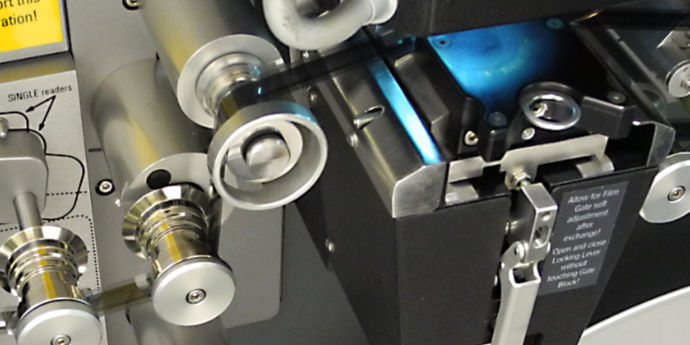In the previous four posts, we assessed four aspects of the Tarax Show Christmas Pantomime kine scans:
- Anatomy of a Kine Frame
- Jitter
- Video Levels
- Soundtrack
The most significant problems were jitter and dust and scratches. We will look at ways to reduce the effect of these in later blog posts.
However, the scan of The Golden Princess done on the Spirit Datacine suffers rather badly from some of the defects to which “line scanners” like the Spirit are susceptible.
Let me explain. The concept of the line scanner is good in theory: move the film at a uniform speed and take a series of very rapid “snapshots” of a single line of pixels which are then reconstituted back into a complete frame. In practice however film speed is not constant. It is subject to short term speed fluctuations — “flutter” in audio tape recording terms. The amount of flutter will depend on the condition of the film. Although the Spirit measures and compensates for film speed, there can be subtle, rapid speed differences between where the film speed is measured and where the film is passing through the scanning gate. Non-uniform shrinkage of old film would also add to this effect. The result is a non-uniform spacing of the single pixel high “snapshots” which varies from frame to frame. What you see is a vertical “squash and stretch” effect on the scanned frames.
More modern “full-frame” scanners, like the Lasergraphics ScanStation used to scan “Merry Make-Believe” (1959), do not suffer from this effect because the entire frame is captured at the same time.
The Golden Princess scan has a particularly bad case of the squash and stretches in some places and there is no easy way to fix this. So I decided in the end to send this reel to Gamma Ray Digital in Boston to have this one scanned on their ScanStation.
The resulting scan is excellent and there is no visible “squash and stretch”. There is however still quite noticeable jitter (see the earlier post on “Assessing the Scans Part 2 — Jitter”). Hopefully we can fix most of that.
In the next post, we will map out a roadmap for restoring these scans for DVD release.
